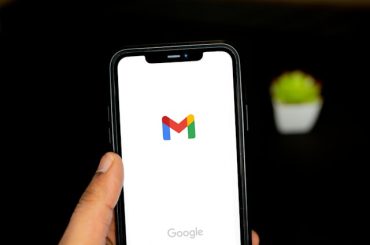Omnichannel marketing is a strategy that provides a seamless customer experience across multiple channels and touchpoints. Here’s a comprehensive overview of an omnichannel marketing strategy:
- Customer-Centric Approach
- Understanding the Customer Journey: Map out the customer journey to understand where and how customers interact with your brand.
- Personalization: Use data to personalize the customer experience at every touchpoint.
- Integration Across Channels
- Consistent Branding: Ensure your brand message and visual identity are consistent across all channels.
- Unified Data: Integrate data from various channels to create a single customer view.
- Multiple Channels
- Online: Website, social media, email marketing, search engines, online ads.
- Offline: In-store experiences, direct mail, events, and call centers.
- Technology and Tools
- CRM Systems: Use Customer Relationship Management systems to manage customer data and interactions.
- Marketing Automation: Automate marketing tasks such as email campaigns, social media posting, and customer segmentation.
- Analytics Tools: Use analytics tools to track customer behavior and campaign performance.
- Content Strategy
- Relevant Content: Create relevant and valuable content for your audience at different customer journey stages.
- Cross-Channel Promotion: Promote your content across multiple channels to maximize reach and engagement.
- Customer Engagement
- Interactive Experiences: Provide interactive experiences such as quizzes, polls, and personalized recommendations.
- Customer Feedback: Collect and act on customer feedback to improve the overall experience.
- Measurement and Optimization
- KPIs and Metrics: Define key performance indicators (KPIs) and metrics to measure the success of your omnichannel strategy.
- Continuous Improvement: Regularly analyze data and feedback to optimize and refine your strategy.
- Team Collaboration
- Cross-Department Collaboration: Ensure that different departments, such as marketing, sales, and customer service, work together to provide a cohesive customer experience.
- Training and Development: Train your team on the importance and execution of an omnichannel strategy.
Benefits of Omnichannel Marketing
- Improved Customer Experience: Provides a seamless and consistent experience, increasing customer satisfaction.
- Increased Engagement: Engages customers across multiple touchpoints, increasing the likelihood of conversion.
- Better Data Insights: Integrates data from various channels, providing a comprehensive view of customer behavior.
- Higher ROI: Optimizes marketing spend by targeting the right audience with the right message at the right time.
Challenges and Solutions with Omnichannel Marketing
- Data Integration: Integrate data from various sources to create a unified customer view.
- Consistent Messaging: Ensure consistency in messaging across all channels.
- Resource Allocation: Allocate resources effectively to manage and execute an omnichannel strategy.
- Technology Adoption: Invest in the right technology to support omnichannel marketing efforts.
By implementing an omnichannel marketing strategy, businesses can create a cohesive and engaging customer experience that drives loyalty and growth.
Omnichannel marketing approach
An omnichannel marketing approach focuses on creating a seamless and integrated customer experience across various channels. Here’s a detailed guide on adopting an omnichannel marketing approach:
Key Components of an Omnichannel Marketing Approach
- Customer Understanding
- Customer Personas: Develop detailed customer personas based on demographics, behavior, preferences, and needs.
- Journey Mapping: Map out the entire customer journey to identify key touchpoints and interactions across different channels.
- Channel Integration
- Unified Messaging: Ensure your brand message is consistent across all channels, whether online or offline.
- Data Synchronization: Integrate data from all channels to maintain a single, comprehensive view of the customer.
- Technology and Tools
- Customer Relationship Management (CRM): Utilize a CRM system to manage customer data and interactions.
- Marketing Automation: Implement marketing automation tools to streamline processes like email marketing, social media management, and campaign tracking.
- Analytics Platforms: Use analytics tools to measure and analyze customer interactions and campaign performance across channels.
- Personalization
- Tailored Experiences: Use customer data to deliver personalized content, recommendations, and offers at every touchpoint.
- Dynamic Content: Implement dynamic content strategies to show different content to different segments based on their behavior and preferences.
- Content Strategy
- Cross-Channel Content: Create content that is adaptable and relevant across multiple channels.
- Consistent Brand Voice: Maintain a consistent brand voice and tone across all platforms.
- Customer Engagement
- Interactive Elements: Incorporate interactive elements like polls, quizzes, and chatbots to engage customers actively.
- Real-Time Support: Provide real-time customer support through live chat, social media, and customer service hotlines.
- Measurement and Optimization
- Key Performance Indicators (KPIs): Define KPIs to measure the effectiveness of your omnichannel approach, such as customer satisfaction, conversion rates, and customer retention.
- Feedback Loops: Establish feedback loops to gather customer insights and use them to improve the overall experience.
Steps to Implement an Omnichannel Marketing Approach
Step 1: Define Objectives
- Establish clear objectives for your omnichannel strategy, such as improving customer satisfaction, increasing sales, or enhancing brand loyalty.
Step 2: Identify Key Channels
- Determine the channels that are most relevant to your target audience. These may include websites, mobile apps, social media, email, and physical stores.
Step 3: Integrate Technology
- Implement the necessary technology to ensure seamless data integration and management across all channels.
Step 4: Develop a Content Plan
- Create a content plan that aligns with your brand message and caters to your audience’s preferences across different channels.
Step 5: Launch and Monitor Campaigns
- Execute your campaigns across multiple channels, ensuring consistency in messaging and branding. Continuously monitor performance and gather data.
Step 6: Analyze and Optimize
- Analyze the collected data to gain insights into customer behavior and campaign performance. Use these insights to optimize your strategy for better results.
Challenges and Solutions
- Data Silos: Break down data silos by integrating data from various sources to maintain a unified customer view.
- Channel Consistency: Ensure consistent messaging and branding across all channels to avoid customer confusion.
- Resource Management: Efficiently allocate resources to effectively manage and execute an omnichannel strategy.
- Technology Integration: Invest in the right technology to support your omnichannel efforts and ensure smooth integration.
Adopting an omnichannel marketing approach, businesses can create a cohesive and engaging customer experience that fosters loyalty and drives growth.
How do you design an omnichannel marketing campaign?
Designing an omnichannel marketing campaign involves several vital steps to ensure a seamless and integrated customer experience across all touchpoints. Here’s a comprehensive guide:
Steps to Design an Omnichannel Marketing Campaign
- Define Campaign Objectives
- Specific Goals: Set clear and specific objectives, such as increasing sales, improving customer engagement, or enhancing brand awareness.
- KPIs: Determine key performance indicators (KPIs) to measure the campaign’s success.
- Understand Your Audience
- Customer Personas: Develop detailed customer personas to understand your target audience’s demographics, preferences, and behaviors.
- Customer Journey Mapping: To identify critical touchpoints and interactions across channels and map the customer journey.
- Choose Your Channels
- Relevant Channels: Select the most appropriate channels for your target audience. These may include social media, email, website, mobile app, and physical stores.
- Channel Integration: Ensure these channels are integrated to provide a seamless customer experience.
- Develop a Cohesive Message
- Unified Messaging: Create a unified and consistent message that resonates across all channels.
- Brand Voice: Maintain a consistent tone to ensure brand recognition and trust.
- Create Engaging Content
- Content Strategy: Develop a content strategy that includes various types of content, such as blog posts, videos, social media posts, emails, etc.
- Personalization: Use customer data to personalize content and offers for different segments of your audience.
- Implement Technology Solutions
- CRM Systems: Utilize Customer Relationship Management (CRM) systems to manage customer data and interactions.
- Marketing Automation: Implement marketing automation tools to streamline processes like email marketing, social media posting, and campaign tracking.
- Analytics Tools: Use analytics tools to track customer interactions and campaign performance across channels.
- Launch and Promote the Campaign
- Cross-Channel Promotion: Promote the campaign across all channels to maximize reach and engagement.
- Coordinated Timing: Ensure the campaign launch and promotional activities are coordinated across all channels for a cohesive experience.
- Monitor and Measure Performance
- Real-Time Tracking: Monitor campaign performance in real-time using analytics tools.
- KPI Analysis: Analyze the KPIs to assess the effectiveness of the campaign.
- Customer Feedback: Collect customer feedback to gain insights into their experience and satisfaction.
- Optimize and Refine
- Data-Driven Decisions: Use data and insights to make informed decisions about campaign optimization.
- Continuous Improvement: Continuously refine and adjust the campaign based on performance data and customer feedback.
What are customer engagement strategies?
Examples of Omnichannel marketing strategy
Here are several examples of successful omnichannel marketing strategies implemented by various companies, highlighting how they integrated different channels to create a seamless customer experience:
- Starbucks
- Mobile App Integration: Starbucks has a highly integrated mobile app that allows customers to order and pay ahead, collect reward points, and receive personalized offers.
- In-Store Experience: The app synchronizes with in-store systems, ensuring that baristas have the order ready when the customer arrives.
- Personalization: Customers receive tailored promotions and rewards based on their purchasing behavior.
- Cross-Channel Consistency: Whether ordering through the app, website, or in-store, the branding and user experience remain consistent.
- Sephora
- Beauty Insider Program: Sephora’s loyalty program integrates online and offline experiences, allowing customers to earn and redeem points through both channels.
- In-Store Technology: Sephora stores feature iPads, enabling customers to access their online profiles, product reviews, and personalized recommendations.
- Mobile App: The app provides access to the loyalty program, virtual try-on features, and exclusive mobile-only offers.
- Email and Social Media: Consistent communication across email and social media channels, promoting personalized offers and content.
- Disney
- My Disney Experience App: This allows guests to plan their entire trip, including booking tickets, making dining reservations, and viewing ride wait times.
- MagicBands: Wearable devices that serve as hotel room keys, park tickets, and payment methods linked to the My Disney Experience app.
- Cross-Platform Consistency: Consistent branding and user experience across the website, app, and physical parks.
- Personalized Experience: Tailored recommendations and notifications based on guest preferences and behaviors.
- Nike
- NikePlus Membership: A loyalty program that offers customized product recommendations, early access to new releases, and exclusive content.
- Mobile App: The Nike app integrates seamlessly with the membership program, offering in-app shopping, workout tracking, and personalized training plans.
- In-Store Experience: Stores feature interactive displays and the ability to scan products for additional information and availability.
- Social Media and Email: Coordinated campaigns across social media and email that reflect the personalized experience of the app and in-store interactions.
- Amazon
- Amazon Prime: A membership program integrating benefits across the website, app, and various Amazon-owned platforms (e.g., Prime Video, Amazon Music).
- Alexa Integration: Voice-activated shopping and account management through Alexa-enabled devices.
- Cross-Device Consistency: Seamless shopping experience, whether on a desktop, mobile app, or smart device.
- Personalization: Highly personalized product recommendations, tailored email campaigns, and targeted ads.
- IKEA
- Augmented Reality App: The IKEA Place app uses augmented reality to allow customers to visualize how furniture will look in their homes.
- Omnichannel Shopping: Customers can browse online, purchase through the app, and pick up in-store or opt for home delivery.
- In-Store Technology: Digital tools and store kiosks to assist with product information and availability.
- Consistent Branding: Uniform experience and messaging across all channels, including catalogs, websites, apps, and physical stores.
Key Takeaways from These Examples
- Integration: Successful omnichannel strategies seamlessly integrate various channels to provide a cohesive customer experience.
- Personalization: Leveraging customer data to deliver personalized experiences and recommendations across all touchpoints.
- Consistency: Maintaining consistent branding and messaging across online and offline channels to build trust and recognition.
- Technology Utilization: Implementing advanced technology such as mobile apps, AR, and CRM systems to enhance the customer journey.
- Customer-Centric Approach: Focusing on understanding the customer journey and optimizing touchpoints to meet their needs and preferences.
By learning from these examples, businesses can develop effective omnichannel marketing strategies that enhance customer engagement, loyalty, and overall satisfaction.











